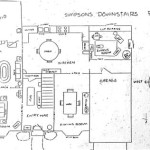Flipping Homes Business Plan: A Comprehensive Guide
Flipping homes, also known as house flipping, involves purchasing a property, renovating it, and then reselling it for a profit within a relatively short timeframe. A well-structured business plan is crucial for anyone looking to enter or succeed in this dynamic and competitive market. This article outlines the key components of a robust flipping homes business plan, covering essential areas from market research to financial projections.
The absence of a clear business plan is a significant risk factor in any entrepreneurial endeavor, particularly in real estate. A business plan serves as a roadmap, guiding decisions and actions throughout the entire flipping process. It helps to identify potential pitfalls, secure funding, and measure progress towards achieving financial goals.
The primary aim of a flipping homes business plan is to articulate a feasible strategy for identifying profitable properties, managing renovations effectively, and achieving a desired return on investment. It also facilitates attracting potential investors or lenders who will require a clear understanding of the project's viability and the borrower's competence.
I. Executive Summary and Company Description
The executive summary is a concise overview of the entire business plan. It should highlight the key aspects of the flipping operation, including the mission statement, business goals, target market, competitive advantages, and financial projections. This section is typically written last, after all other sections are completed, as it summarizes the content of the full plan.
The company description provides a more detailed explanation of the flipping venture. It outlines the legal structure of the business (e.g., sole proprietorship, LLC, corporation), the ownership and management team, and the experience and expertise that the team brings to the table. This section should also articulate the company's specific niche or focus within the flipping market, such as concentrating on certain types of properties (e.g., single-family homes, condominiums) or geographic locations.
Furthermore, the company description should detail the business's ethical standards and commitment to responsible renovation practices. This can include using environmentally friendly materials, adhering to all building codes and regulations, and ensuring the safety and well-being of workers and contractors.
II. Market Analysis
A thorough market analysis is the cornerstone of a successful flipping homes business plan. It involves researching the local real estate market to identify potential opportunities and assess the level of competition. This analysis should include demographic data, housing trends, and economic indicators.
Key areas of focus within the market analysis include identifying target neighborhoods, understanding local property values, and analyzing recent sales data. This information helps to determine the types of properties that are most likely to generate a profit and the optimal price points for resale.
Competition analysis is an integral part of the market research. It involves identifying other flippers operating in the target market and assessing their strengths and weaknesses. This information allows the business to differentiate itself and develop a competitive advantage, such as specializing in a particular type of renovation or targeting a specific niche market.
The market analysis should also consider factors such as interest rates, economic growth, and government regulations that may impact the real estate market. Staying abreast of these trends is essential for making informed decisions and mitigating potential risks.
III. Property Acquisition and Renovation Strategy
This section outlines the process for identifying, evaluating, and acquiring properties for flipping. It should detail the criteria used to assess potential investments, including location, condition, and potential for appreciation. A clearly defined acquisition strategy is crucial for ensuring that the business invests in properties that are likely to generate a profit.
A key component of the acquisition strategy is determining the maximum purchase price that can be paid for a property while still achieving the desired return on investment. This calculation should take into account renovation costs, holding costs, and marketing expenses.
The renovation strategy outlines the plan for transforming the acquired property into a marketable and appealing home. This includes identifying necessary repairs, upgrades, and cosmetic improvements. The renovation strategy should be based on market research and current design trends to ensure that the finished product appeals to the target buyer.
Developing a detailed renovation budget is crucial for managing costs and avoiding unexpected expenses. The budget should include estimates for materials, labor, permits, and other associated costs. It is also important to factor in a contingency fund to cover unforeseen problems or delays.
IV. Marketing and Sales Strategy
A well-defined marketing and sales strategy is essential for attracting potential buyers and selling the renovated property quickly and efficiently. This section of the business plan should outline the tactics that will be used to generate leads, showcase the property, and close the sale.
Marketing channels may include online listings, social media, open houses, and real estate agents. The choice of marketing channels will depend on the target market and the type of property being sold. It is important to track the effectiveness of different marketing strategies to optimize the marketing budget and maximize results.
The sales strategy should outline the process for negotiating with potential buyers and closing the deal. This may include working with a real estate agent, handling negotiations directly, or using a combination of both approaches. It is imperative to have a clear understanding of the legal requirements for selling real estate in the local market.
Staging the property effectively is a crucial aspect of the sales strategy. Staging involves arranging furniture and décor to create an appealing and inviting atmosphere that showcases the property's potential.
V. Financial Projections
The financial projections section presents a detailed analysis of the project's expected financial performance. This includes projected revenues, expenses, and profits. The financial projections should be based on realistic assumptions and supported by market research and historical data.
Key financial statements to include in the business plan are the income statement (profit and loss statement), the balance sheet, and the cash flow statement. The income statement projects revenues and expenses over a specific period, typically one to three years. The balance sheet provides a snapshot of the company's assets, liabilities, and equity at a specific point in time. The cash flow statement tracks the movement of cash into and out of the business.
A crucial aspect of the financial projections is the calculation of the return on investment (ROI). This metric measures the profitability of the project and is used to assess its financial viability. The ROI is calculated by dividing the net profit by the total investment.
Sensitivity analysis is also important. This involves evaluating how changes in key assumptions, such as renovation costs or sale prices, would impact the project's profitability. Sensitivity analysis helps to identify potential risks and develop contingency plans.
VI. Management Team and Organizational Structure
This section details the management team and their roles within the flipping operation. It highlights the experience, skills, and qualifications of each team member. A strong management team is essential for ensuring that the business is well-managed and that project goals are achieved.
The organizational structure outlines the reporting relationships and lines of authority within the business. This helps to clarify roles and responsibilities and ensures that tasks are completed efficiently.
If the business plans to use subcontractors for renovations or other services, this section should include information about their qualifications and experience. It is important to carefully vet subcontractors to ensure that they are reliable and capable of delivering high-quality work.
A clear and well-defined management structure is crucial for ensuring accountability and effective decision-making.
VII. Risk Assessment and Mitigation
This section identifies potential risks that could negatively impact the flipping operation and outlines strategies for mitigating those risks. It is important to be proactive in identifying and addressing potential problems to minimize their impact on the business.
Common risks in the flipping business include unexpected renovation costs, delays in the renovation process, fluctuations in the real estate market, and difficulty finding buyers. Each identified risk should be assessed in terms of its likelihood and potential impact.
Mitigation strategies may include obtaining insurance coverage, developing contingency plans, securing financing options, and closely monitoring market trends.
A thorough risk assessment and mitigation plan demonstrates to investors and lenders that the business is aware of potential challenges and has taken steps to address them.
By developing a comprehensive flipping homes business plan that addresses these key areas, aspiring flippers can increase their chances of success in this competitive and rewarding market. The plan serves as a guide for making informed decisions, managing risks, and achieving financial goals.

Real Estate House Flipping Business Plan Sample Pages Black Box Plans
What Are Some Business Plan Examples For Flipping Houses Quora

House Flipping Business Plan A Comprehensive Guide Woodward Avenue

Real Estate House Flipping Business Plan Black Box Plans

How To Start A House Flipping Business In 7 Steps Free

How To Start A Business Flipping Houses

House Flipping Business Plan Template 2024 Planbuildr

How To Start A House Flipping Business In 7 Steps Free

Real Estate House Flipping Business Plan Sample Pages Black Box Plans

Real Estate House Flipping Business Plan Sample Pages Black Box Plans








